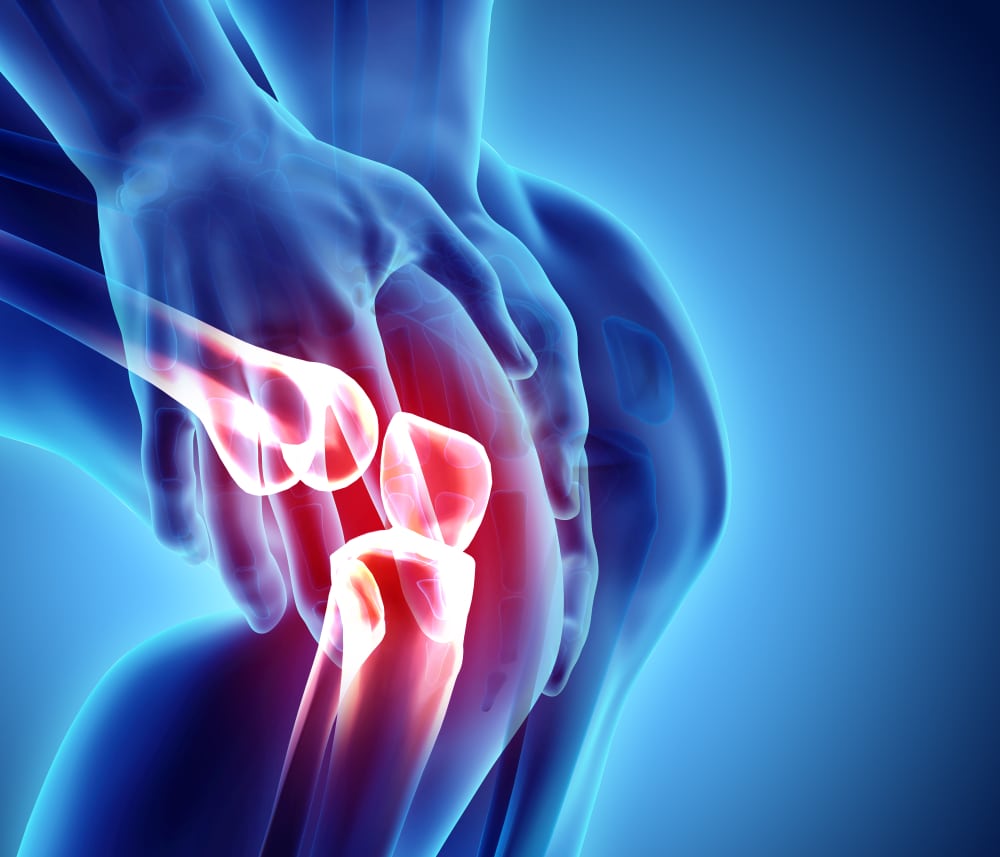Does PRP Make Cartilage Grow?

Credit: Shutterstock
I get about yearly PRP injections into my aging knees. Why? Well, there’s been “a thing” hanging out there that maybe, just maybe, this might help protect the cartilage I have. Is this for real? Let’s review the research this morning.
What Is PRP?
Platelet-rich plasma is when a doctor concentrates your platelets in plasma. These platelets have healing growth factors and exosomes that help to initiate healing. PRP comes in different concentrations, but most physicians experienced in orthobiologics use concentrations that have at least 3-7 times more platelets than the patient’s normal baseline. Based on our peer-reviewed research that shows better results in older cells with higher concentrations of platelets, we use higher concentrations still, usually from 7-20 times concentrated (1).
How Could PRP Help Cartilage?
PRP releases growth factors, which are chemicals that can help things grow. One of those is called Transforming Growth Factor-beta (TGF-b) (2). This one has very positive effects on cartilage growth. PRP has also been shown to stimulate cartilage cells in the lab (3). Animal models have also shown evidence of cartilage growth with PRP (4). Hence, it’s been thought for some time that PRP may help patients protect their own knee cartilage.
What Is Arthritis?
Arthritis means that you lose cartilage, damage the bone, and that bone spurs have developed. While cartilage loss is generally not painful (it’s usually the bone that hurts), it does decrease the ability of the joint to cushion the bone. Hence, if you could get an injection that would save or grow cartilage, that would be a net positive.
The New Research
Researchers in Egypt recruited a total of 100 patients with mild to severe knee osteoarthritis who were divided into two groups (5). Group 1 included 50 patients who were given two inside the joint (intra-articular) knee injections of PRP which were 1 week apart. Group 2 also included 50 patients who received non-steroidal anti-inflammatory drugs (NSAIDs) and chondroprotective drugs. Both groups had their function measured using a WOMAC questionnaire and had their cartilage thickness measured via ultrasound imaging.
The PRP group had better WOMAC scores at 2 and 6 months. Interestingly, the improvement of WOMAC in that group happened regardless of the severity of the knee arthritis. In addition, a significant increase in cartilage thickness was found at 6 months relative to the pre-injection baseline in the PRP group.
Are There Any Other Similar Studies?
When one finds a study that goes one direction, we should look at what’s published to see if that has been replicated. While these studies are sometimes apples and oranges, there are other studies on this topic. One study demonstrated that PRP reduced the progression of arthritis in about 3/4’s of patients (9). However, three other studies have shown that while PRP helped pain and function in knee arthritis patients, it didn’t improve cartilage thickness (6-8).
Concentration?
One of the problems with all of these studies is that they didn’t use what we would consider high-dose PRP. Meaning that our research has always shown better cellular repair activity in older people with doses in at least 10-20 times concentration. None of these studies achieved that mark.
The upshot? Does PRP promote cartilage repair? Maybe? Right now we have two studies suggesting it does and three that suggest it doesn’t. Hence, the jury is still out at this point. However, I’m still getting my knees injected once a year or so with high-dose PRP!
__________________________________________
References:
(1) Berger DR, Centeno CJ, Steinmetz NJ. Platelet lysates from aged donors promote human tenocyte proliferation and migration in a concentration-dependent manner. Bone Joint Res. 2019 Feb 2;8(1):32-40. doi: 10.1302/2046-3758.81.BJR-2018-0164.R1. PMID: 30800297; PMCID: PMC6359887.
(2) Wang W, Rigueur D, Lyons KM. TGFβ signaling in cartilage development and maintenance. Birth Defects Res C Embryo Today. 2014;102(1):37-51. doi:10.1002/bdrc.21058
(3) Krüger JP, Hondke S, Endres M, Pruss A, Siclari A, Kaps C. Human platelet-rich plasma stimulates migration and chondrogenic differentiation of human subchondral progenitor cells. J Orthop Res. 2012 Jun;30(6):845-52. doi: 10.1002/jor.22005. Epub 2011 Nov 4. PMID: 22058056.
(4) Xu Z, Yin W, Zhang Y, et al. Comparative evaluation of leukocyte- and platelet-rich plasma and pure platelet-rich plasma for cartilage regeneration. Sci Rep. 2017;7:43301. Published 2017 Mar 7. doi:10.1038/srep43301
(5) Baki NMA, Nawito ZO, Abdelsalam NMS, Sabry D, Elashmawy H, Seleem NA, Taha AAA, El Ghobashy M. Does Intra-Articular Injection of Platelet-Rich Plasma Have an Effect on Cartilage Thickness in Patients with Primary Knee Osteoarthritis? Curr Rheumatol Rev. 2021;17(3):294-302. doi: 10.2174/1573397117666210114151701. PMID: 33459238.
(6) Buendía-López D, Medina-Quirós M, Fernández-Villacañas Marín MÁ. Clinical and radiographic comparison of a single LP-PRP injection, a single hyaluronic acid injection and daily NSAID administration with a 52-week follow-up: a randomized controlled trial. J Orthop Traumatol. 2018 Aug 20;19(1):3. doi: 10.1186/s10195-018-0501-3. PMID: 30128934; PMCID: PMC6102156.
(7) Şen Eİ, Yıldırım MA, Yeşilyurt T, Kesiktaş FN, Dıraçoğlu D. Effects of platelet-rich plasma on the clinical outcomes and cartilage thickness in patients with knee osteoarthritis. J Back Musculoskelet Rehabil. 2020;33(4):597-605. doi: 10.3233/BMR-181209. PMID: 31594201.
(8) Hart R, Safi A, Komzák M, Jajtner P, Puskeiler M, Hartová P. Platelet-rich plasma in patients with tibiofemoral cartilage degeneration. Arch Orthop Trauma Surg. 2013 Sep;133(9):1295-301. doi: 10.1007/s00402-013-1782-x. Epub 2013 Jun 5. PMID: 23736793.
(9) Halpern B, Chaudhury S, Rodeo SA, Hayter C, Bogner E, Potter HG, Nguyen J. Clinical and MRI outcomes after platelet-rich plasma treatment for knee osteoarthritis. Clin J Sport Med. 2013 May;23(3):238-9. doi: 10.1097/JSM.0b013e31827c3846. PMID: 23238250.
If you have questions or comments about this blog post, please email us at [email protected]
NOTE: This blog post provides general information to help the reader better understand regenerative medicine, musculoskeletal health, and related subjects. All content provided in this blog, website, or any linked materials, including text, graphics, images, patient profiles, outcomes, and information, are not intended and should not be considered or used as a substitute for medical advice, diagnosis, or treatment. Please always consult with a professional and certified healthcare provider to discuss if a treatment is right for you.